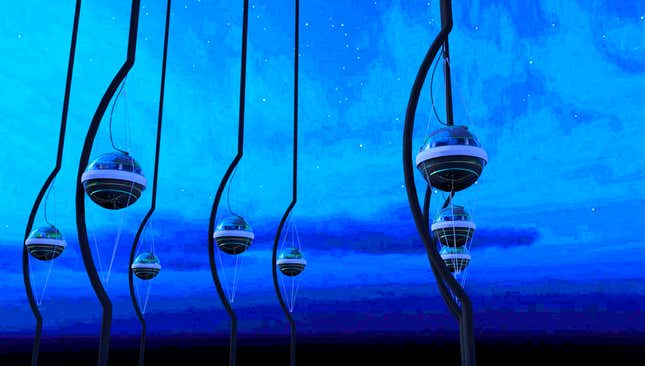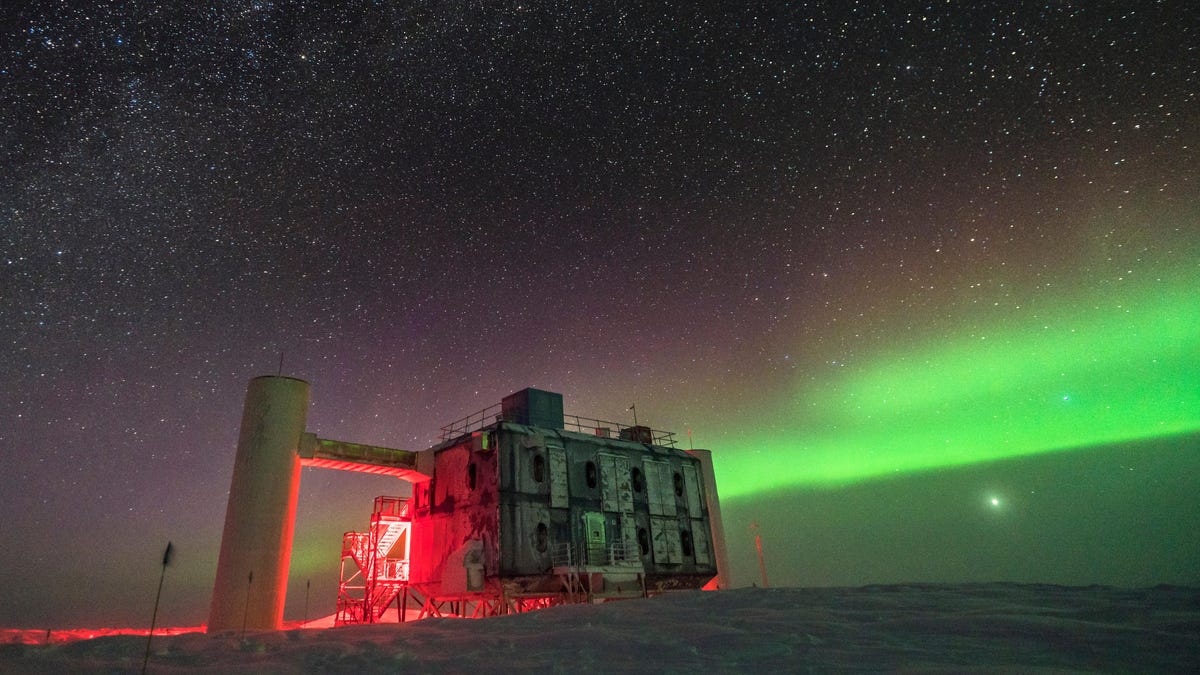Researchers working on data from the IceCube Neutrino Observatory buried deep in Antarctic ice think they may have spotted tau neutrinos, a certain flavor of the subatomic particles from space. The seven candidate signals appeared in 9.7 years of observatory data, a testament to just how elusive these little particles are.
About 100 trillion neutrinos pass through your body every second, according to the observatory. They are the lightest particles we know of that have mass, and are fundamental, meaning they are not constituted by smaller physical building blocks. The collaboration’s findings are set to publish in Physical Review Letters and are currently hosted on the preprint server arXiv.
“The detection of seven candidate tau neutrino events in the data, combined with the very low amount of expected background, allows us to claim that it is highly unlikely that backgrounds are conspiring to produce seven tau neutrino imposters,” said Doug Cowen, a physicist at Penn State University and one of the study’s lead authors, in an IceCube release. “The discovery of astrophysical tau neutrinos also provides a strong confirmation of IceCube’s earlier discovery of the diffuse astrophysical neutrino flux.”
I know: what the hell is a “diffuse astrophysical neutrino flux”? This refers to the dense stream of neutrinos from deep in space, well beyond the relatively small cosmic neighborhood that is the Milky Way. The stream is composed mostly of electron and tau neutrinos, and a small percentage of muon neutrinos.
Particles from deep in space come in many shapes and sizes, but most of their sizes are very, very small. To their credit, neutrinos have been directly observed. Others, like the hypothetical axion, remain elusive, and if proven to exist could be responsible for at least some of the universe’s dark matter.

IceCube consists of long cables stringing together over 5,000 light-sensitive devices that detect rare flashes of blue light that occur when neutrinos interact with molecules in the Antarctic ice. Cowen said that the chances of the background noise fluking a tau neutrino signal were less than one in 3.5 million. Their new finding “rules out the absence of astrophysical [tau neutrinos] at the [5-sigma] level,” the team reported. Basically, you can consider the tau neutrinos to be vanishingly rare, but there.
Fermilab is building its own neutrino detectors a mile below Lead, South Dakota. Those detectors—together known as the Deep Underground Neutrino Experiment (or DUNE)—are nearly a mile below Earth’s surface, and the first detector is expected to be operational in 2029.
IceCube has been toiling under Antarctica for over a decade, so DUNE will have some catching up to do. But two neutrino detector experiments are better than one, so here’s to another decade of discovery.
More: Why the U.S. Is Betting It All on the Most Puzzling Particle in the Universe

